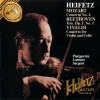| Voice/Instrument: | Harpsichord |
Biography
Malcolm Hamilton was born on Dec. 14, 1932, in Victoria, British Columbia. He started playing the piano and harpsichord at the age of 12, but trained to be a public school teacher because his father didn't believe he could make a living as a musician. After teaching junior high in Victoria for three years, he became the first recipient of the music fellowship awarded by the American National Defense Scholarship and went to the University of Washington in Seattle, where he was the first student to receive a Bachelor's and Master's degree in Harpsichord.
He then moved to Southern California where he studied harpsichord at USC with Alice Ehlers and received his doctorate. Ehlers, who died in 1981, had been the first student of world-renowned harpsichordist Wanda Landowska. Malcolm taught piano and harpsichord at USC for 30 years.
A stickler for being true to what he believed to be the composers' intent, he played as he taught, with strict attention to ornamentation, and phrasing appropriate to the baroque period. He nevertheless decried lifeless performances offered in the name of "authentic historical performance practice". In a recent conversation with the writer and with particular reference to a performance he had attended of the complete Goldberg Variations � with all repeats � performed uniformly and relentlessly on a single manual harpsichord and one 8' stop, he commented " I have sat through some harpsichord recitals that were more effective than sleeping pills". As he told former Times music writer Daniel Cariaga: "No one has yet been able to document to me that live performances in baroque days were as lifeless as some of those we hear today".
No one ever accused the ebullient Hamilton of putting audiences to sleep in his recitals. "Festive" was one of his favorite words which formed the basis of his concert approach.
Yet audience attention was not won through gimmickry and certainly not through digital dexterity � the ever-popular boast of being able to play such-and-such faster than so-and-so can. Indeed where the gravity of the music demanded, Malcolm would bring to his performances a depth of insight rarely heard from any musician in any field of music. In his rendering of Bach's 48 Preludes and Fugues for example, Malcolm uses the technique of "terrace dynamics", moving from one manual to the other, and of octave building, adding a 4' in the top or a 16' to the base, to bring out in every possible way the intricate internal architecture of each piece. Unique to Malcolm's performances is a technique he learned from Landowska, whereby both hands are playing on the upper manual, while a thumb-stretch to the lower manual brings out a theme, or one important line in the music.
Malcolm quickly built a name for himself with local performances, and when the Los Angeles Chamber Orchestra was being formed in 1969, he received a personal invitation from director Neville Marriner to join them. He played for six years with the orchestra, first under Marriner, then under Gerard Schwarz.
When he made his New York debut at Tully Hall in 1974, the New York Times reviewer called it "...in its way, one of the best this listener has ever heard. ... He came in with a program geared more to easy listening than artistic gravity, played it with great attention to the varieties of color, rhythm and harmony it offered and delivered it all with the poise of a man who knew exactly what he was doing at every momen.... (His) playing had human and entertainment qualities that made the harpsichord completely believable as something other than an instrument of musicological argument."
Over the years, he recorded with RCA, Delos, Canterbury, Oryx, Angel and Nonesuch labels.
Malcolm was 70 when he died Nov. 17, 2003 of congestive heart failure. He had never sought great fame. He enjoyed home life too much to agree to extended tours. He was open, outgoing and expansive, and corresponded faithfully with dozens of friends around the world. He was an artful storyteller and loved to entertain with tales of the fiery Ehlers, complete with her German accent. One of his favorites was of the time he was embellishing a celebrated work as Landowska had done. Ehlers snapped at him, "Landowska vass a great artist. Vee are not great artists - especially you!"
When he retired from USC in 1997 it was a sad day for his students whom he'd gently coached, making them feel encouraged and important. But his final recital was, as Malcolm always preferred, a festive occasion. He always complained that playing in a tuxedo restricted his movements, and gave his farewell recital in a colorful silk caftan.
Among his numerous honors are the following non-academic degrees: Licenciate of the Royal Schools of Music, London; Associate of the Royal Conservatory of Toronto, and Associate of the American Guild of Organists.






